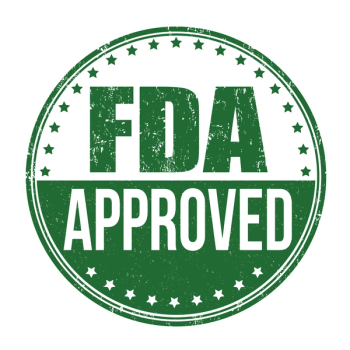
Results for Truxima, recently launched in the United States, and complement inhibitors were presented at the 61st American Society of Hematology Annual Meeting and Exposition.

Results for Truxima, recently launched in the United States, and complement inhibitors were presented at the 61st American Society of Hematology Annual Meeting and Exposition.

Splenomegaly, or enlargement of the spleen, is common in patients with Philadelphia-negative myeloproliferative neoplasms, and it is associated with symptoms like early satiety and abdominal pain. The role that splenomegaly has in terms of quality of life and prognosis in primary myelofibrosis is fairly well understood, but it has been less frequently investigated among patients with essential thrombocythemia (ET) and polycythemia vera (PV).

Drug maker Alnylam Pharmaceuticals has announced that the ILLUMINATE-A trial, a phase 3 study of lumasiran, an investigational RNA interference product targeting glycolate oxidase, met its primary end point in a study of patients with primary hyperoxaluria type 1 (PH1).

As healthcare companies, tech firms, and startups seek to use digital tools to help individuals manage their health, patients have growing concerns about how their data are used. During a panel discussion during the opening day of the FT Global Pharmaceutical and Biotechnology Conference 2019, held this week in London, United Kingdom, executives from across the pharmaceutical and digital health spaces discussed the critical importance of building relationships with patients as a means to not only reap high-quality data, but also improve patients’ outcomes and save healthcare systems money.

The FDA today approved Biogen and Alkermes’ diroximel fumarate, an oral agent, to treat relapsing forms of multiple sclerosis (MS), including clinically isolated syndrome, relapsing-remitting disease, and secondary progressive disease. The drug, approved under the 505(b)(2) regulatory pathway on the basis of its bioequivalence to dimethyl fumarate (Tecfidera), will be sold as Vumerity.

The National Institutes of Health (NIH) has announced plans to invest at least $100 million over the next 4 years to develop gene-based therapies for 2 diseases: HIV and sickle cell disease. The Bill and Melinda Gates Foundation will also contribute $100 million to the goal of advancing these potential cures, with an aim toward providing affordable, globally available treatment that will be accessible to patients in low-resource settings.

While targeted testing for HIV has helped more individuals to be diagnosed and treated, the CDC recommends routine, universal HIV screening for all individuals aged 13 years to 64 years as a way to reach populations who may be less likely to seek out or participate in HIV testing. Emergency departments (EDs) in particular may play an important role in universal screening, as evidenced by the experience of 2 academic EDs in San Diego, California.

While antiretroviral therapy (ART) can suppress HIV infection, ART cannot completely eradicate HIV, which remains in a latent reservoir in CD4-positive T cells during treatment; discontinuation of ART leads to rapid rebound of the virus. This reservoir forms even when ART is initiated early on in the infection, and while the most widely accepted model of how the reservoir forms involves infection of a CD4-positive T cell as it transitions to a resting state, the dynamics and timing of the reservoir’s formation have been largely unknown.

From The Center for Biosimilars®, a discussion of a regulatory change coming in 2020: Insulins have always been biologics from a scientific perspective, and the products themselves will not change as a result of bringing them under regulation as biologics as a matter of law. However, labeling for these products will change.

Human leukocyte antigen c (HLA‐C), a protein encoded by the HLA-C gene, plays an important role in protecting against both cancer and viruses. At the same time, it has been implicated in autoimmune diseases, including rheumatic diseases, though the mechanism by which it contributes to the pathogenesis of these diseases is not yet clear.

A total of 45% of patients made at least 1 error when using an inhaler, and the number of errors per patient ranged from 1 to 6.

Patients with lower neutrophil counts had similar reductions in pneumonia, regardless of whether their treatment contained or did not contain inhaled corticosteroids.

Chronic obstructive pulmonary disease (COPD) is understood to be linked with both physical and mental distress, and recent research also suggests that, among current and former smokers with COPD, there exists a significant unmet need in terms of patients’ anxiety and depressive symptoms.

Biologics have become the standard of care for rheumatoid arthritis (RA) that fails to respond adequately to conventional disease-modifying antirheumatic agents (DMARDs), and overall, these agents are safe and effective. However, an association between treatment with anti–tumor necrosis factor (anti-TNF) agents and new-onset psoriasis in patients with RA has been observed.

While pulmonary rehabilitation (PR) is an evidence-based and cost-effective treatment for people with chronic obstructive pulmonary disease (COPD), uptake of and compliance with this intervention has been poor. For patients who decline PR, inspiratory muscle training (IMT), which involves strengthening the inspiratory muscles by increasing their workload, may be an option, particularly as it can be performed in the home instead of in a clinic.

“Our data suggest that people with central obesity, insulin resistance, and active psoriasis are the most at risk for liver fibrosis,” wrote the authors, and “if use of methotrexate is a risk factor, it is not the only risk factor and for most patients it is unlikely to be the most important risk factor.”

The clinical features of systemic inflammation in chronic obstructive pulmonary disease (COPD) are well recognized, but little is understood about the molecular mechanisms underlying this inflammation.

In a study presented at the British Association of Dermatologists’ 99th Annual Meeting in Liverpool, United Kingdom, July 2-4, 2019, researchers from the University of Manchester and the Salford Royal National Health Service Foundation Trust reported on an effort to assess evidence on the risk of cancer in patients with psoriasis. They found that there are a number of site-specific cancers for which patients with psoriasis are at elevated risk.

A recent study used a cross-sectional analysis of a large cohort of patients with atrial fibrillation (AF) to investigate the relationship between chronic obstructive pulmonary disease (COPD) and AF to identify mediators of increased vascular risk; they found that the risk of cardiovascular complications is higher for patients with AF who also have COPD than it is for patients without COPD.

Given that psoriatic arthritis is associated with increased fracture risk, neutralizing the key proinflammatory and bone-destructive mediators of the disease, wrote the authors, appears to be important to restoring bone health.

In a study recently published in Respirology, investigators sought to identify the benefit of using a handheld flow meter in screening patients for chronic obstructive pulmonary disease (COPD).

Research on biosimilars presented at the 2019 Annual Meeting of the American Society of Clinical Oncology.

The use of biologics to treat psoriasis has increased over time, and a recent study has demonstrated that these drugs may have benefits that extend well beyond clearing patients’ skin. The study, published in Cardiovascular Research, found that biologic therapy for psoriasis was associated with a reduction in coronary artery disease.

Using blood eosinophils as a proxy for tissue eosinophils has become a biomarker for the risk of exacerbation, as well as for response to inhaled corticosteroids, in patients with chronic obstructive pulmonary disease (COPD), and blood eosinophils are currently considered a treatable trait for managing COPD.

A recent study used Mendelian randomization, which uses genetic variants to randomly allocate individuals to groups based on genotype, to further investigate the causal relationship between body mass index (BMI) and psoriasis. It found that as BMI rises, so too does the risk for developing psoriasis.



Increased transparency, value-based pricing, and other policy reforms are necessary to ensure that Americans can access medications at affordable prices, a panel of experts said during a US Senate hearing January 29, 2019.

Among the survey’s crucial finding are that value-based contracts are not yet seeing marked success. According to the survey results, 39.8% of respondents said that the majority of value-based relationships within the healthcare market will not contain both upside and downside shared risk for another 3 to 5 years.


Published: October 10th 2017 | Updated:

Published: October 11th 2017 | Updated:

Published: October 13th 2017 | Updated:

Published: October 17th 2017 | Updated:

Published: October 18th 2017 | Updated:

Published: October 20th 2017 | Updated:

259 Prospect Plains Rd, Bldg H
Cranbury, NJ 08512
© 2025 MJH Life Sciences®
All rights reserved.
